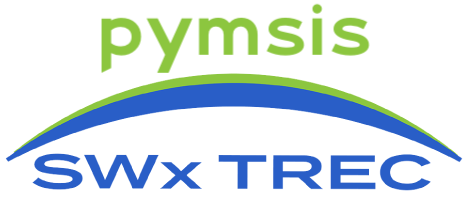pymsis.msis.run#
- pymsis.msis.run(dates: Union[_SupportsArray[dtype[Any]], _NestedSequence[_SupportsArray[dtype[Any]]], bool, int, float, complex, str, bytes, _NestedSequence[Union[bool, int, float, complex, str, bytes]]], lons: Union[_SupportsArray[dtype[Any]], _NestedSequence[_SupportsArray[dtype[Any]]], bool, int, float, complex, str, bytes, _NestedSequence[Union[bool, int, float, complex, str, bytes]]], lats: Union[_SupportsArray[dtype[Any]], _NestedSequence[_SupportsArray[dtype[Any]]], bool, int, float, complex, str, bytes, _NestedSequence[Union[bool, int, float, complex, str, bytes]]], alts: Union[_SupportsArray[dtype[Any]], _NestedSequence[_SupportsArray[dtype[Any]]], bool, int, float, complex, str, bytes, _NestedSequence[Union[bool, int, float, complex, str, bytes]]], f107s: Optional[Union[_SupportsArray[dtype[Any]], _NestedSequence[_SupportsArray[dtype[Any]]], bool, int, float, complex, str, bytes, _NestedSequence[Union[bool, int, float, complex, str, bytes]]]] = None, f107as: Optional[Union[_SupportsArray[dtype[Any]], _NestedSequence[_SupportsArray[dtype[Any]]], bool, int, float, complex, str, bytes, _NestedSequence[Union[bool, int, float, complex, str, bytes]]]] = None, aps: Optional[Union[_SupportsArray[dtype[Any]], _NestedSequence[_SupportsArray[dtype[Any]]], bool, int, float, complex, str, bytes, _NestedSequence[Union[bool, int, float, complex, str, bytes]]]] = None, *, options: Optional[list[float]] = None, version: Union[float, str] = 2.1, **kwargs: dict) ndarray[Any, dtype[_ScalarType_co]]#
Call MSIS looping over all possible inputs.
If ndates is the same as nlons, nlats, and nalts, then a flattened multi-point input array is assumed. Otherwise, the data will be expanded in a grid-like fashion. The possible return shapes are therefore (ndates, 11) and (ndates, nlons, nlats, nalts, 11).
- Parameters:
dates (ArrayLike) – Dates and times of interest
lons (ArrayLike) – Longitudes of interest
lats (ArrayLike) – Latitudes of interest
alts (ArrayLike) – Altitudes of interest
f107s (ArrayLike, optional) – Daily F10.7 of the previous day for the given date(s)
f107as (ArrayLike, optional) – F10.7 running 81-day average centered on the given date(s)
aps (ArrayLike, optional) –
Ap for the given date(s), (1-6 only used if geomagnetic_activity=-1)(0) Daily Ap(1) 3 hr ap index for current time(2) 3 hr ap index for 3 hrs before current time(3) 3 hr ap index for 6 hrs before current time(4) 3 hr ap index for 9 hrs before current time(5) Average of eight 3 hr ap indices from 12 to 33 hrsprior to current time(6) Average of eight 3 hr ap indices from 36 to 57 hrsprior to current timeoptions (ArrayLike[25, float], optional) – A list of options (switches) to the model, if options is passed all keyword arguments specifying individual options will be ignored.
version (Number or string, default: 2.1) – MSIS version number, one of (0, 2.0, 2.1).
**kwargs (dict) – Single options for the switches can be defined through keyword arguments.
f107 (float) – Account for F10.7 variations
time_independent (float) – Account for time variations
symmetrical_annual (float) – Account for symmetrical annual variations
symmetrical_semiannual (float) – Account for symmetrical semiannual variations
asymmetrical_annual (float) – Account for asymmetrical annual variations
asymmetrical_semiannual (float) – Account for asymmetrical semiannual variations
diurnal (float) – Account for diurnal variations
semidiurnal (float) – Account for semidiurnal variations
geomagnetic_activity (float) – Account for geomagnetic activity (1 = Daily Ap mode, -1 = Storm-time Ap mode)
all_ut_effects (float) – Account for all UT/longitudinal effects
longitudinal (float) – Account for longitudinal effects
mixed_ut_long (float) – Account for UT and mixed UT/longitudinal effects
mixed_ap_ut_long (float) – Account for mixed Ap, UT, and longitudinal effects
terdiurnal (float) – Account for terdiurnal variations
- Returns:
- The data calculated at each grid point:[Total mass density (kg/m3)N2 # density (m-3),O2 # density (m-3),O # density (m-3),He # density (m-3),H # density (m-3),Ar # density (m-3),N # density (m-3),Anomalous oxygen # density (m-3),NO # density (m-3),Temperature (K)]
- Return type:
ndarray (ndates, nlons, nlats, nalts, 11) or (ndates, 11)
Notes
The 10.7 cm radio flux is at the Sun-Earth distance, not the radio flux at 1 AU.
aps[1:] are only used when
geomagnetic_activity=-1.
